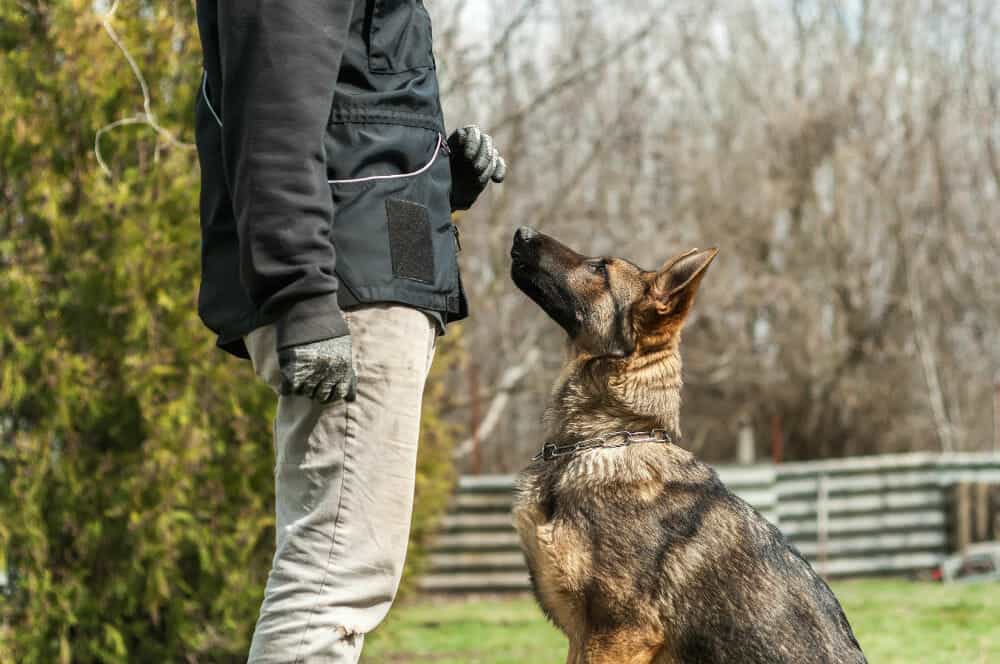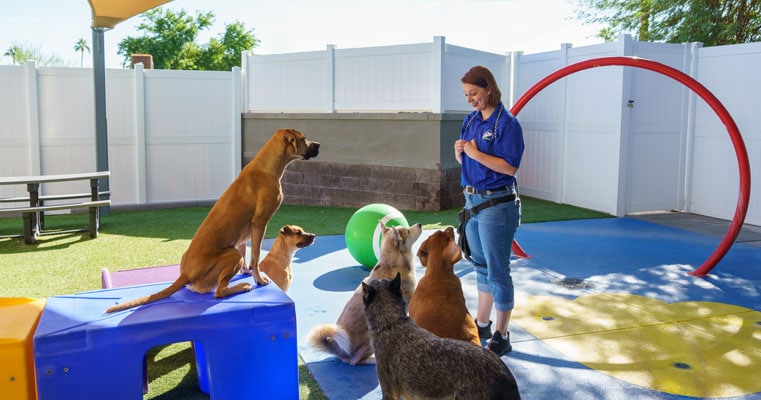Just how to Pick the Right Approach for Effective Dog Training
Just how to Pick the Right Approach for Effective Dog Training
Blog Article
Necessary Tips for Effective Dog Training: A Guide for Pet Dog Owners
Efficient dog training is a multifaceted procedure that needs a tactical method customized to both the pet's personality and the owner's purposes. Comprehending just how to browse these challenges can considerably boost the training experience, eventually transforming the partnership between proprietor and canine.
Understanding Canine Behavior
Understanding dog actions is important for effective training and promoting a harmonious connection in between pooches and their owners. Pet dogs connect mainly with body language, articulations, and activities, making it important for proprietors to interpret these signals properly. Recognizing a pet dog's stance, tail setting, and ear positioning can provide understandings right into its emotional state. A wagging tail does not always indicate happiness; it can additionally signify excitement or anxiousness.

Socialization plays a considerable role in pet dog habits; exposure to different environments, people, and various other animals can considerably affect a canine's temperament. Furthermore, aspects such as type attributes and private temperament should lead training methods, as some types may have particular behavioral attributes that demand tailored methods. By comprehending these elements, proprietors can create an encouraging atmosphere that encourages favorable behavior, bring about successful training results and a deeper bond with their animals.
Developing Regular Commands
Effective interaction with your dog starts with establishing consistent commands. This foundational component of training is vital for cultivating understanding in between you and your animal. Uniformity in the commands you utilize ensures that your dog can dependably link details words or expressions with the preferred habits.
When picking commands, select clear, unique words that are simple to separate and claim from each other. Prevent utilizing similar-sounding commands that may confuse your pet dog. Using "sit" and "stay" is suitable, but "rest" and "struck" might lead to misunderstandings.
Furthermore, maintain the exact same tone and volume for every command. Pets are sensitive to singing hints, so varying your tone can create confusion.
It is similarly essential to make sure that all household members get on the exact same web page concerning the commands used. A united front in command use will stop blended signals and reinforce the knowing process.
Favorable Reinforcement Strategies
The power of positive support in canine training depends on its capacity to encourage desired behaviors with benefits and appreciation. This strategy is based in the concept that habits complied with by beneficial outcomes are more probable to be duplicated. By integrating positive support into your training regimen, you can successfully shape your pet dog's behavior in a constructive manner.
To apply favorable support, it's vital to identify what motivates your pet, whether it be treats, toys, or spoken appreciation. When your pet performs a preferred action, such as resting on command, quickly award them with a treat or affection. This organization between the command and the positive outcome enhances their understanding.
It's important to timing the benefits properly; supplying the support within seconds of the wanted habits aids your dog make the link (dog training). Additionally, consistency is key-- make certain that all relative make use of the very same commands and reward systems to stay clear of complication

Slowly, you can reduce the regularity of deals with as your pet dog discovers the actions, transitioning to praise or periodic incentives. This method not only fosters a strong bond in between you and your dog yet also advertises a positive understanding atmosphere, making training a pleasurable experience for both.
Socialization and Interaction
Continually exposing your canine to a selection of settings, individuals, and other pets is critical for their social growth. Socializing needs to start early, preferably throughout the crucial home window of 3 to 14 weeks, when puppies are most receptive to new experiences. Older pets can also profit from continuous socializing efforts.
Present your pet dog to different settings, such as parks, pet-friendly shops, and city locations. This exposure aids them adjust to different stimuli, lowering anxiety and anxiety actions. Motivate favorable interactions with various other pet dogs and people, ensuring that these experiences are secure and regulated to cultivate confidence.
Use organized playdates with genteel pets, as this can enhance your canine's social skills and teach them suitable habits. Obedience courses and training sessions likewise provide outstanding opportunities for socialization, enabling your canine to communicate with others in a supervised setting.
Screen your canine's body movement during interactions, as this will certainly help you evaluate their convenience level. Slowly raise exposure to more challenging scenarios while making certain that each experience is positive. A well-socialized dog is most likely to exhibit balanced habits, making them a pleasure to have in any setting.
Dealing With Typical Training Obstacles
Every canine owner will experience training challenges eventually, regardless of their dog's age or socialization degree. Recognizing common concerns such as stubbornness, interruptions, and terror can aid in developing effective approaches for enhancement.

Interruptions during training sessions can derail focus. To battle this, begin training in a silent environment with very little stimuli. Gradually introduce disturbances as the canine becomes more efficient in commands. Short, frequent training sessions are also effective in maintaining focus.
Fearfulness can prevent a pet dog's discovering process. Gradual desensitization to the resource of anxiety, coupled with positive get more reinforcement, can aid minimize stress and anxiety. Patience is crucial; never ever require a dog right into a circumstance that triggers distress, as this may exacerbate the concern.
Eventually, understanding and addressing these typical challenges with an organized technique will cultivate a more effective training experience, strengthening the bond in between canine and proprietor while promoting reliable knowing.
Conclusion
In summary, effective pet training relies upon a comprehensive understanding of canine behavior, the establishment of constant commands, and the application of positive support methods. Socialization plays a critical duty in creating well-adjusted animals, while dealing with common training obstacles needs patience and adaptability. By executing these vital approaches, pet dog owners can cultivate a strong bond with their pets and promote preferable behaviors, ultimately leading to a harmonious relationship between people and their canine friends.
Understanding pet behavior is important for efficient training and cultivating an unified connection between additional hints pooches and their owners.Socialization plays a considerable function in pet dog habits; direct exposure to numerous environments, people, and various other pets can significantly impact a pet dog's temperament.The power of favorable reinforcement in pet dog training exists in its capacity to motivate desired behaviors with benefits and praise. By integrating positive reinforcement into your training regimen, you can efficiently shape your canine's habits in a useful fashion.
In summary, effective dog training counts on a comprehensive understanding of canine behavior, the facility of constant commands, and the application sites of positive reinforcement techniques.
Report this page